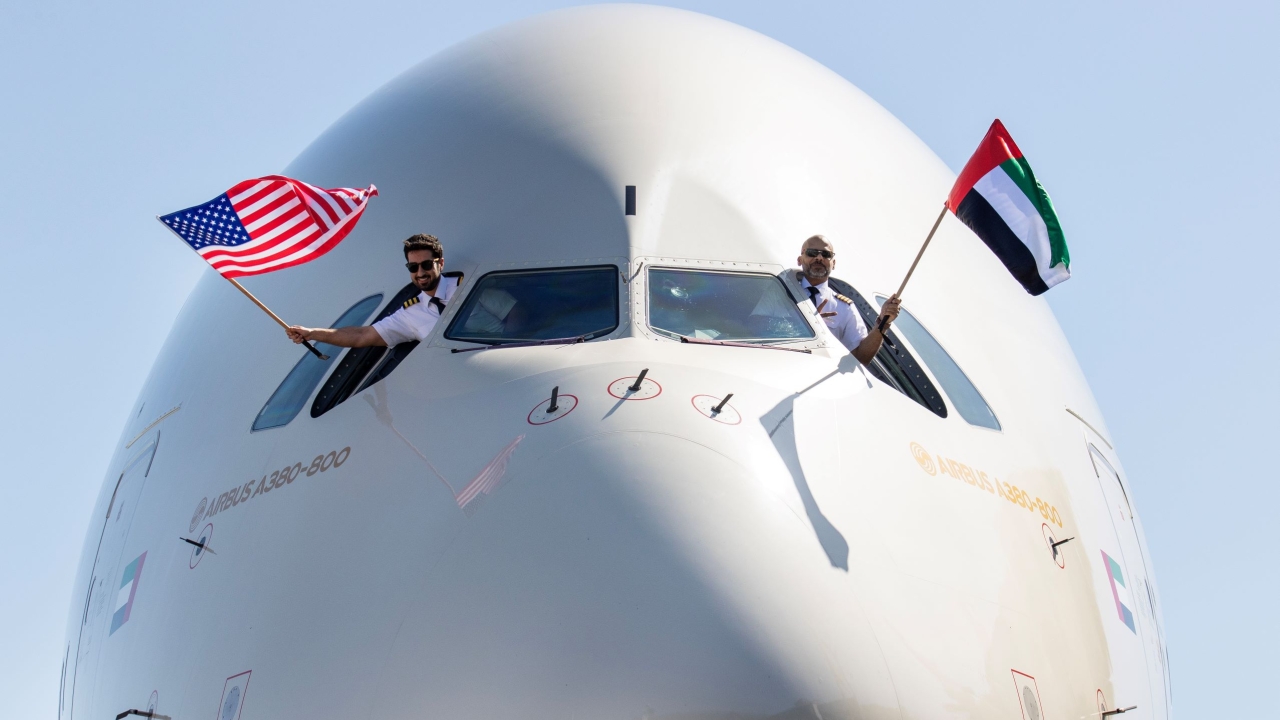Rolls-Royce delivers a slice of history
The first of Rolls-Royce's Trent 900 engines for Emirates Airline's latest tranche of A380 super-jumbo airliners, ordered in 2013, have now been delivered to Toulouse for installation by makers Airbus. Geoff Thomas reports.

Emirates picked Rolls-Royce to supply 217 engines, valued at $9.2 billion, for 52 Airbus A380s and says the UK manufacturer is in pole position to power a more fuel-efficient ‘neo’ variant of the aircraft if the long-mooted plan goes ahead.
The new A380s will be the first Emirates airliners to be powered by Rolls-Royce Trent 900 engines, the airline having chosen the UK company’s power-plants in preference to the rival Engine Alliance GP7200 engines that power its previously ordered 90 super-jumbos.
Speaking at a London media briefing, Emirates president, Tim Clark, said that some of the Trent 900s could be converted to more efficient ‘neo’ types, should Airbus decide to go ahead with an upgrade of the A380.
He also commented that the aerodynamically revamped airliner could use an improved version of Rolls-Royce’s Trent XWB engine now in service on the Airbus A350.
The world’s largest international airline has said it could order at least 100 more A380s if Airbus commits to a ‘neo’ version, equipped with engines that are more fuel-efficient.
Any A380neo would, it’s believed, be expected to deliver fuel efficiency gains of between 10% and 13%. Emirates is confident that an order for around 200 A380neo aircraft may spur Airbus into further developing the airliner.
Airbus, on the other hand, clearly believes that re-engining the A380 is unlikely to be as successful as the current A320neo and A330neo projects have been. Only time, and further growth in a relatively stagnant market, will tell.
Many market analysts believe that, while the current A380 is competitive in economic terms with Boeing’s 777-300ER, it is less so when compared with the latest B777-9. So the conundrum facing Airbus is simple: can it maintain sales of the current A380 for perhaps a decade while market demand for the super-jumbo worldwide increases?
The delivery of the initial shipset of four Trent 900 engines to Airbus for installation on the first of Emirates’ 52 A380s was a significant event for Derby-based Rolls-Royce for two key reasons.
Firstly, it was the initial shipment in an order that is the largest ever in Rolls-Royce’s commercial engines history. The decision also made the Trent 900 the engine of choice, both in terms of number of customers and also in terms of overall market share. Rolls-Royce now has just less than 70% of the current firm order backlog for the A380 and 11 out of 17 operators have now selected the Rolls-Royce option.
The delivery was also significant in that Emirates’ Trent 900s are the first to be built to the new enhanced performance (EP3) standard.
The EP3 package, which is the current build standard, includes elliptical leading edges on compressor blades, and a variety of improvements in the internal aerodynamics of the engine, all contributing towards enhanced fuel economy and improved longevity before maintenance is required.
The package also includes casing improvements to optimise cooling air and sealing, together with further improvements around the high-pressure turbine.
This latest EP3 package follows a Trent 900 EP2 programme, introduced in 2014, that included optimised fan blade tip clearances; improved turbine case cooling; improved sealing for the low-pressure (LP) turbine; an optimised intermediate pressure (IP) compressor; an improved engine sector stator; and improvements to the internal air flow system.
The Trent 900 engine that powered the very first A380 commercial flight back in 2007, was the company’s main display exhibit at the most recent Dubai Airshow and, during the event, it was presented to Emirates. This gesture now enables Emirates Engineering apprentices and personnel to familiarise themselves first-hand with the mechanics and operations of the engine.
It was subsequently moved from the air show site to Emirates’ engineering training facility at Dubai International Airport – a location where maintenance and engineering staff can now familiarise themselves and receive hands-on training, learning how to perform tasks that would be difficult to achieve on an in-service aircraft, including fan blade installation and component removal.
Stay up to date
Subscribe to the free Times Aerospace newsletter and receive the latest content every week. We'll never share your email address.

